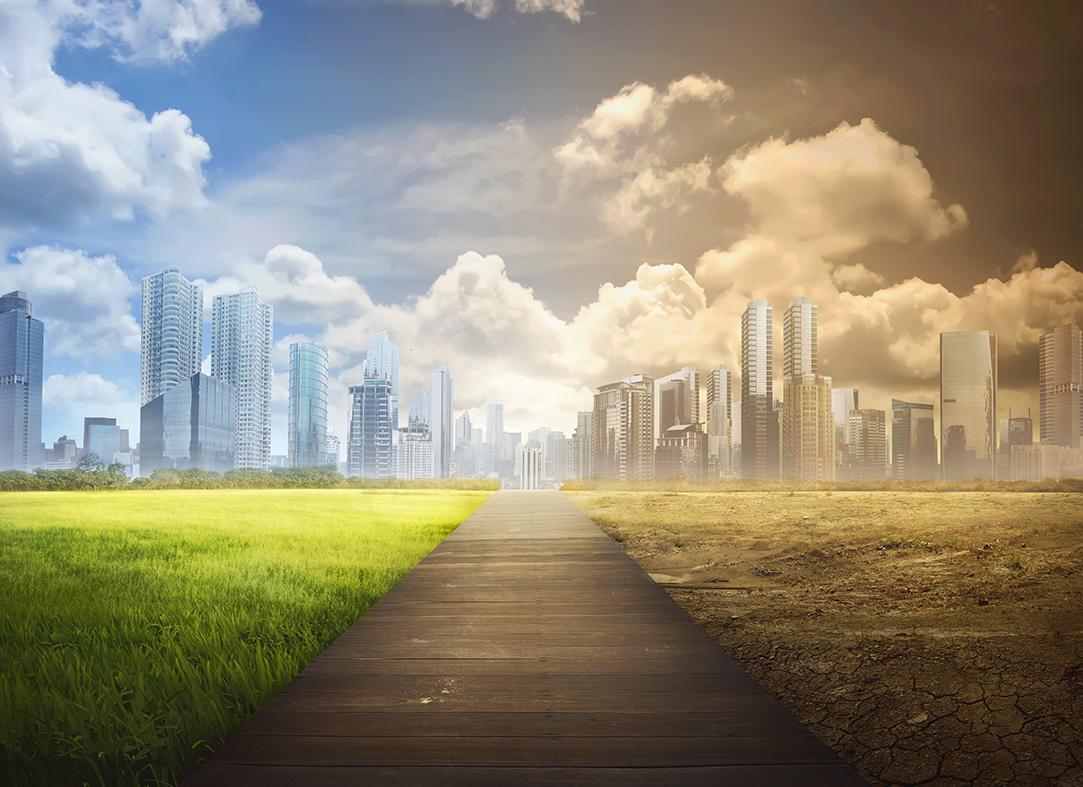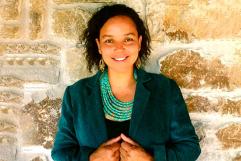
How do cities directly affect our health?
Pollution, noise, excess heat and lack of green spaces have a direct effect on our health and quality of life, in addition to being social and economic determinants.
Our postcode affects our health more than our genetic code. A new trend in town planners and architects are already aware of this and are seeking out ways to turn cities into spaces that are slightly healthier. These professionals include people such as Marta Rofín, the Academic Director of the postgraduate degree course in Town Planning and Health at the Universidad Politécnica de Catalunya, and the Coordinator from the City Council of Vic (Barcelona) for the network of cities in URBACT, the European Healthy Cities project.
She acknowledges that the link between city and health has not been taken into account until recently and there is still a long way to go. “Public policies emphasise motivating active mobility, but many medium-sized cities (which are the large majority), do not have prepared pavements, shady areas or places to sit down,” according to Marta Rofín. The location of sports facilities, for example, which are usually found in the suburbs, should also be taken into account. “All of this makes an impact on the decisions made by people to carry out a healthy life style,” she explains.
In Spain, men’s life expectancy is 80 years and women’s, 85, but in both cases, we experience 70 years of quality of life. And one of the most problematic elements is noise
For the expert, “there are different aspects of a city that affect physical health, but these can also impinge on mental and environmental health,” in such a way that the concept of health is understood in a “holistic way”. The same message is being given from the World Health Organisation, which affirms that being healthy does not involve just not being ill, but rather it is a complete state of well-being. “From this point of view, we are talking about the quality of life and the city and the environment in which we move having a significant effect on us.”
Because it is estimated that “only 20% of health depends on the healthcare system, while the remaining determining factors might be social, economic and above all, environmental.”
The expert recalls that in the 19th century there was a hygienist trend in town planning and large open spaces were created such as the Ensanche de Ildefonso Cerdá, in Barcelona; the Plan Haussman, in Paris or the so-called ‘garden cities’. “The idea was to prevent the transmission of diseases, creating wide-open spaces where the air could circulate. This is not the case now, but we must encourage quality of life, well-being and the interaction amongst citizens.”
Productive cities versus caring cities
Cities are places aimed at productivity, according to the architect Izaskun Chincilla in her book ‘La ciudad de los cuidados’ (The caring city) (Catarata). And by putting productive activities at the heart of the matter, citizens’ needs have been neglected, turning them into “individuals who contribute to the productivity”. The biological and subjective characteristics are not considered by politicians when they govern or legislate, meaning that older people, those with impaired sight or who do not react well to stress for example, get left behind. “Our cities are a hostile setting for activities not linked to productivity: trying to sleep a little, using a service, drinking clean water without paying for it, breathing unpolluted air, having fun without consuming or walking without getting wet on a rainy day form great challenges in today’s cities,” according to Chinchilla, a professor in Practical Architectonics at the Bartlett School of Architecture (London).
Surroundings as an exclusion point
This quality of life and well-being must reach all districts. “The social and economic constraints greatly determine the lifestyle we lead. In terms of our income, we have more or less free time or we interact more and we have access to a certain type of spaces,” according to Rofín. In fact, she and her team carried out a study where they analysed some scientific studies published from 2015 onwards in which a clear link between the environment where we live and health is shown. “We reached the conclusion that there are a series of elements such as population density, mixture of uses, access to green spaces and housing or mobility” that are related to health.
In Paris, the Mayoress Anne Hidalgo made the concept of the 15 minute city popular. It is this mixture of uses referred to by Rofín, “that allows you to have access to shops, work and leisure just 15 minutes from where you live.” Walking through and seeing green spaces is another of the keystones to guarantee citizens’ well-being. “But the location is also a determining factor, because it is not the same having a green belt around the city where you can go on Sundays, than having green spaces in all the districts, in all possible ways, in small spaces, roofs or façades.” Not just access to these small spots of nature must be guaranteed, but also “the continuity of this green infrastructure,” which encourages biodiversity and healthy mobility.
We realised the importance of being able to walk around the city and having natural spaces and paths where we can stroll at the weekends, well-communicated and accessible
The expert recalls that there are many scientific studies that affirm that people carry out more sport if we have a green space nearby and we put greater value on our social life. Additionally, green spaces allow cities to be more resilient against global warming, because they regulate the temperature, preventing the so-called islands of heat and they filter the rain water when there are heavy storms. They also mitigate acoustic pollution. “In Spain, men’s life expectancy is 80 years and women’s, 85, but in both cases, we experience 70 years with quality of life. And one of the most problematic elements is noise, which prevents you from sleeping well and causes discomfort or anxiety, in such a way that incorporating elements in the cities that mitigate this noise is not a trivial factor.”
A green social prescription
It has also been scientifically proven that in schools where there are green spaces, the pupils study better than in others where these areas are missing, and “that patients in hospitals with views of green spaces get better 20% faster,” Rofín affirms, who states that 70% of the population over the age of 60 years take psychotropic drugs. This is the reason behind the move forward in steps to improve emotional well-being that does not include the prescription of drugs and for other solutions are to be sought, such as the green social prescription that is already being implemented in some Spanish cities.
“Instead of pills, patients are prescribed a social activity, but for this to work, it is important for the city to be prepared” and for the person in question to be able to get to the community centre or to a bowling green, and that this is not in full sunlight and that there are benches. “Many older people plan their outings in terms of the benches where they can sit down,” the expert explains. “To the extent that the decision of where to put a bench is important, when drafting a town planning project. We are influencing people’s mobility, in their daily routines. There are many elements in the urban surroundings that condition people’s lives and we can do a great deal more than we think,” she adds.
Reflections from the pandemic
The Covid-19 pandemic we have lived through over the past two years has made each of us think, both individually and as a society, about the places where we live. “It was a moment of reflection and many articles were written about the elements around us that prevented us from living the life we wanted, for example, how important it is to have a balcony in the home or have access to the rooftop,” Rofín indicates, “or the significance of having a park nearby for practicing sport or playing with the children.” The “Mediterranean mixed city” was highly valued, where everything is nearby, compared to residential areas, for example, which take up large areas of land and where there are no services.
Thanks to Covid-19, the expert from the UPC affirms, “we realised the importance of being able to walk around the city and to have natural spaces and paths where we can stroll at the weekends, well-communicated with the city and accessible on foot, by bicycle or by public transport.” The pandemic also made us more aware of our health and “that this depended on other people; that this was all linked up”.
Initiatives to improve our surroundings
The World Economic Forum launched the ‘BiodiverCiudades’ (BiodiverCities) Challenge to seek out innovative solutions in the large cities. Amongst the most prominent solutions are BitaGreen, which is developing software with maps that identify how urban green spaces help to reduce floods; or Amsterdam’s Resilio project to face up to the climate challenges in cities.Other initiatives include Hot Heart, which attempts to cover the carbon-free heating needs in Helsinki, with a cost that is 10% lower than at present; the Idas Valley Community, in Cape Town (South Africa), which creates employment opportunities promoting open-air recreational activities, recovering the native vegetation and preserving the natural environment. The Swiss Sustainable Districts Association also stands out, which designs sustainable districts that are environmentally-friendly and that respect the well-being of their inhabitants.



